There is just something so down-home comforting about a barn. It speaks of simpler times when our ancestors labored with their hands to provide food and care for their families. So it makes sense that you’d want to live in one, right? Obviously, if you live in a barn, it doesn’t smell like hay and horses, even if it looks exactly like a barn on the outside.
You’ll get all the comforts of home with high ceilings, open living spaces and the opportunity for all the creativity you can muster. Because when you’re converting a barn into a home, you’re starting from scratch.
When looking at barn style homes, they have a number of distinctive architectural features that you’ll find on most examples of these structures. They can be true barns that have been refurbished or modern versions designed to look like they once served as the real thing. In any case, not every home will have all of these barn-inspired elements but each one will have a few.
Post-and-beam and timber-frame construction
These two styles of framing are slightly different, however both are found in barn homes. In both cases, the frame construction is exposed as a design feature. The difference between the two comes in the style of the timbers themselves. In timber-frame construction, the wood lengths are flat on each side while those in post-and-beam construction are only flat on the side that connects to the framing or joints.
Timber-frame homes have visible timbers in the inside but post-and-beam homes feature the timbers on the exterior. In both cases, the timbers are joined in a special way.
Gable Roof
A gabled roof is one of the more common silhouettes associated typical barn construction. It is essentially a triangle shape built on top a rectangular structure. The steep angles of the top were the norm among older barns, but are still often found in today’s modern barn homes.
Gambrel Roof
A gambrel or gambrel roof generally has two sides with each having two different slopes. This is. Sometimes also called Dutch roof. The upper sloped section has a shallow angle, but the lower section has a steeper slope. This particular style of roof has the found in a sloped roof while it has more headroom inside. This style is considered most iconic among barn homes, especially in rural parts of the United States.
Vertical Siding
The cladding on most barn homes is made of vertical planks, most often board-and-batten or shiplap. The vertical style is preferable over horizontal siding because it helps keep water from seeping in, allowing it to run straight down. Board-and-batten cladding is available in smooth and woodgrain finishes and is the type that has narrow strip of wood covering the joint of each pair of boards. Shiplap, on the other hand, is wood planks that have grooves, allowing the boards to be installed with tight joints that are flush, without the covering strip.
Cupola
Many barn homes have a decorative little done on top, called a cupola. Originally, these. Structural elements were designed to help release heat from the upper area of the barn, but in. today’s homes, they are merely decorative. The cupola can be constructed from a range of different building materials, such as copper or wood — or even glass.
Sliding Doors
Sliding barn doors are commonly found in residential construction these days, particularly in homes of the modern farmhouse style. They actually originated in barns, as an alternative to swinging doors, which are heavy, put a lot of stress on the upper joints and can be hard to control in high winds. Sliding styles are easier to handle and are made of wood panels hanging on metal rails. To open and close the door, the panels slide along the rail.
Open Plan Space
Most barns are one big open space, so barn homes tend to have a large, open-plan living space in the main floor. Instead of lots of dividing walls, these modern versions embrace the history and spirit of a traditional barn with wide open spaces and loft-style second floor areas.
Big windows
Whereas old barns typically have no windows, modern barn style homes often replace walls – or large sections of a wall – with massive windows. This helps maintain the overall feel of the barn style and brings in lots of natural light.
Beautiful Barn Homes To Inspire From
Light-filled Napa Valley Barn
Nestled in the wilds of rural Napa, California wine country, this barn home was constructed on the existing footprint of a 1950s ranch house. Designed by Faulkner Architects, the 3,900-square-foot home was inspired by a tack barn that was renovated into a bunkhouse. The two-story house features an asymmetrical gabled roof, which is designed so that the shorter side of the roof faces the southwest sun and reduces heat gain. A recessed entry is shaded for ease.




Unlike traditional barn homes, this one has a fireplace and chimney, which is displaced from the structure with glazed joints. On the east side, the home has a view and receives the morning sun. The upper areas of the main space have no windows and are reminiscent of the shell-like form of a basic traditional barn. The southeast gable end has a big vertical wood shutter, and when open at both ends, eh breeze can through the home. A steel bridge connects the upper sleeping level with the hillside and tack barn above.
Russian Organic Barn Style Home
Blending with the landscape, this rustic barn home in Russia blends traditional elements with innovative construction technologies. Reclaimed and historic building materials play a large part in the structure, designed by Nefa Architects.




Located in Trubacheyevka, Russia, the 180-square-meter residence was built with the aim of blending in, not standing out. To this end, the architects developed an exterior design that is simple and pays homage to the old Muscovite village style. They did this by bringing in century-old wood planks from northern Russia for the façade. Cladding the home in these rustic planks gives it an organic look that is in sync with the rural surroundings.
At the same time, the construction technology is totally modern, using innovative developments like a roof membrane system for insulation and moisture management. Inside, the historic and reclaimed materials continue to play a big role: terrazzo marble floors were installed along with a fireplace constructed from 150-year-old chamotte – also called firesand — bricks that were upcycled.
Sustainable Salvaged Barn Home in New York
While the majority of today’s barn homes are newly constructed, the Fox Hall Barn Home in upstate New York is actually a 19th-century barn that was salvaged and moved to a new location. Located in the town of Ancram, the home was built using passive house principles and includes a photovoltaic array in the roof that powers the buildings on the property. Designed by the BarlisWedlick architecture and interior design firm, the residence includes a green-roofed garage equipped with an energy monitoring system. It also has a Tesla charging station.




The exterior cladding was painted black and the small windows were painted a dramatic red for contrast. Inside, the layout makes the most of the open space with a loft including a fireman’s pole that leads to a studio apartment. It also features a wood-burning stove and open living and bedroom area that can be divided by a wall that rises from within the master suite platforms.
The property also includes a 3-story 787 sq. ft. tower with a sauna, a cabin-style home and the state’s first natural swimming pool that uses gardens to handle all the filtration.
Everything You Should Know About Barn Homes
Barn homes History
Barn living has been around for a long time. All the way back in prehistoric times, people were using a barn structure as a house and a stable at the same time, gaining all the benefits of living in close quarters with animals. During the medieval period, barns began to evolve into purely storage related buildings, whether for animals or crops. They were simple to build and customize to an owner’s needs with a few different styles depending on the region. In America in particular, farmers took to the Low German House style, building the barns that we know and love today. Then, in the late 2oth century, it became popular to take one of these classic barns and convert it into a house. Sometimes that including reinforcing the barn that was already there and sometimes that meant tearing it all down to start fresh on the foundation. Either way, there are now many beautiful examples of converted barns that whisper of our past and nod to the future.
Exterior of the barn house
The easiest barn conversions are the ones when the barn is well built and sturdy. You can leave the classic barn shape intact while you insulate and weather proof the outside. It saves on materials and gives you the most farmhouse-looking barn you could hope for.
Even if your barn is falling apart, that doesn’t make your case hopeless. Use the scrap pieces as materials for the new structure. When it’s built, paint it red for the classic barn look that makes your heart go all nostalgic.
The one flaw of most barns is the lack of windows so as you plan and complete your barn house, you’ll want to think about where you can strategically add them. Since it’s basically a big rectangle, all you really have to do is think about what pattern looks best on the outside and how that relates to your interior plan.
If you’re working at keeping a large open living space indoors, a large window is going to be a better option than a small one. Not only will it maximize the natural light in your space, you will also eliminate any dark corners by the ceiling.
Some people who convert barns prioritize maintaining any and all historical value. Rather than ditching those barn doors, consider using them as sliding shutters over a giant window. It will be the crowning glory of your barn house.
It’s obvious that barns don’t have porches so you may want to think about adding one as you build. One easy option is to use an end of the barn foundation for your porch rather than walling it in. Or if you’d prefer an open patio, pavers make a pretty space for entertaining.
Don’t forget the garage! Being a big open space to begin with, barn houses are excellent places to add a garage. Just choose a corner to put your garage door or even build onto your original barn for a large rustic looking space to park the car.
Want to create a barn house that everyone will remember? Include the silo in your floor plan. That’s right. Make the silo into an office or library or breakfast nook, depending on how your house is laid out. Everyone will remember eating brunch in a silo.
Barns come in many different shapes and sizes so don’t be afraid to work with what you have. A ranch style barn like the one above can make a great one level house or if you have more vertical space, create multiple floors. It’s all about the creativity.
Barns don’t have to look like a barn to be one. While you’re converting a barn to a house, feel free to make it as modern as you like. The simple lines and rustic textures will be perfect for a modern Scandinavian-style home.
Interior of the barn homes
Barn houses are known for their open floor plans and large living areas. If you want to keep that barn feel inside as well as outside, it can be helpful to keep the classic barn supports. You get just a bit of that rustic feel while keeping your large living area.
If you want to live in a rustic house, a converted barn is the way to go. Keep all that historic glamour by using the original barn supports in your home. Whether they actually support or just look pretty, that raw rough wood will set the tone for the rest of your barn house.
One of the crowning features in old homes are the high ceilings. Even if your converted barn is new, you can still get the same effect by leaving the ceiling open to the living area. Open rafters make a space seem rustic and storied while a smooth ceiling keeps the eyes down on the home around you.
With all the vertical space a barn house provides, it’s one of the easiest places to add a second story. If you do, leave some second story living area open to the downstairs below. It will keep the feeling of open living while creating a more private area to hang out in.
When you give a barn a second story, you gain all the lovely eaves and attic corners to create cozy nooks. Give a bedroom a comfortable window seat. Make a dormer into a spot for your desk. Hang curtains across a nook for kids to make a fort for play. The more hideaway spaces you add to your barn house, the more it will feel uniquely you.
Let’s talk windows. Your barn will most likely need a few added panes to make it feel like a house and provide your rooms with natural light. When you’re adding windows, don’t be afraid to go for a few odd shapes. They will provide a unique feature to your barn, bringing a bit of modern to an otherwise rustic abode.
Need another place to put a window in your barn house? Just look up. Skylights can be a great option for a room where wall space doesn’t allow for sufficient windows. And not just any skylight. A roof of windows suddenly makes your space feel like a greenhouse, not to mention the amazing stargazing parties you can host indoors.
While we’re talking about additions for your barn house, you have to consider a fireplace. In a rustic home, fireplaces are the finishing touch to coziness and comfort. If you really want to go all out, make your fireplace double sided so you can enjoy a good flame in the living room and the dining room.
Lucky for you, shiplap is still the “in” material for rustic homes. Feel free to go crazy with it in your barn house, covering your living room, your bedroom, your laundry room, and any other room you like. It’s clean lines will usher you into homemaking in your converted barn.
Just like the exterior of your barn house doesn’t have to be rustic, neither does the interior. Decorating with neutrals, seeking clean lines and smooth wood finishes can make your barn house into a modern paradise for you and your family. Who cares that it used to be a rough rustic barn.
Beautiful barn house renovation ideas
The charm and warmth of barn-style homes can be expressed in a variety of different ways so there’s many variations of this style that add all sorts of cool and interesting features to the array of classic elements we’ve come to expect from such structures. You can check out below a couple of examples showing how these homes have been customized to suit their owners’ needs and unique style.
A modern barn house in New York
Stunning is a perfect word to describe this barn home. It’s located in Southampton, New York and it’s a two-storey residence with 5,200 square feet of living space inside. It was renovated by studio D’Apostrophe Design and it’s as gorgeous on the inside as it is on the outside but in quite different ways.
The exterior of this barn-style house has a fairly typical aesthetic for this style, with lots of salvaged wood used for the siding and a dark color palette in general that helps this building blend in with the surrounding landscape. On the inside it’s a very stylish, minimal and bright home with strong contemporary influences. The crisp white walls and ceilings set a nice backdrop for the dark wood furniture, the sophisticated light fixtures and the splashes of color introduced by the area rugs and various decorations.
An old barn turned into a stylish retreat in Washington
The beautiful area in the foothills of the Cascades mountains, in Washington, is the absolutely perfect spot for a charming barn-style retreat. That’s exactly what studio MW|Works Architecture + Design had to work on a while ago. They were charged with the renovation of an old turn of the century barn which had to be converted into a modern and inviting holiday home. It was a really cool challenge because it meant creating a mixture of old and new in a unique manner.
The 3,875 square foot barn became a beautiful 3-bedroom home with magnificent views of the mountains. The architects limited the exterior design to simple and raw materials which keep the authenticity of the barn alive and allow it to keep that original retro vibe. For the interior they went with a selection of warm and natural materials with a strong emphasis on wood. They include several unique features such as a wall unit made from repurposed old crates or a staircase with metal railings.
A multipurpose barn home in Washington
A lot of old barns have been completely remodeled and transformed into modern homes. However, in this case the strategy was a bit different. Studio SkB Architects designed this place to be a multi-purpose structure and to function as a home but also partially as a working barn in correlation with a commercial fruit orchard. It can also be used as a venue for various types of events.
Related: The Best Sliding Barn Door Hardware Kits For Your Next Successful Project
The initial plan was for this to be a traditional red metal barn that would house tractors and various equipment but the plan changed and a different style was chosen instead. The architects went with a more inviting and homely aesthetic with a lowered roof line and big windows and sliding doors that welcome the outdoors in and take advantage of the beautiful scenery. On the main floor there’s a big entertainment area with a large kitchen and a big storage area for orchard equipment. Upstairs is where another living area and the bedrooms are situated. There’s also a basement level with a wine cellar.
The post Everything You Need To Know About Barn Homes appeared first on Home Decorating Trends - Homedit.







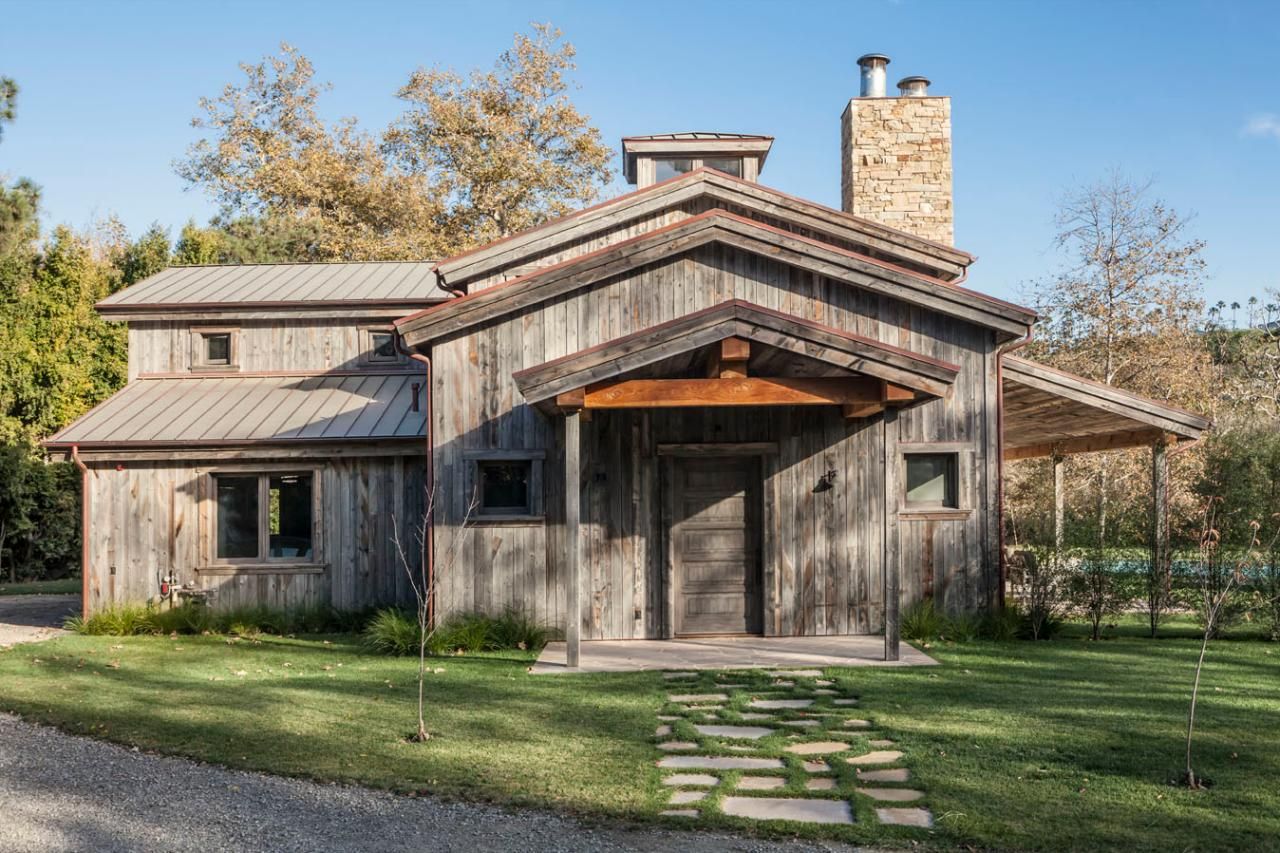
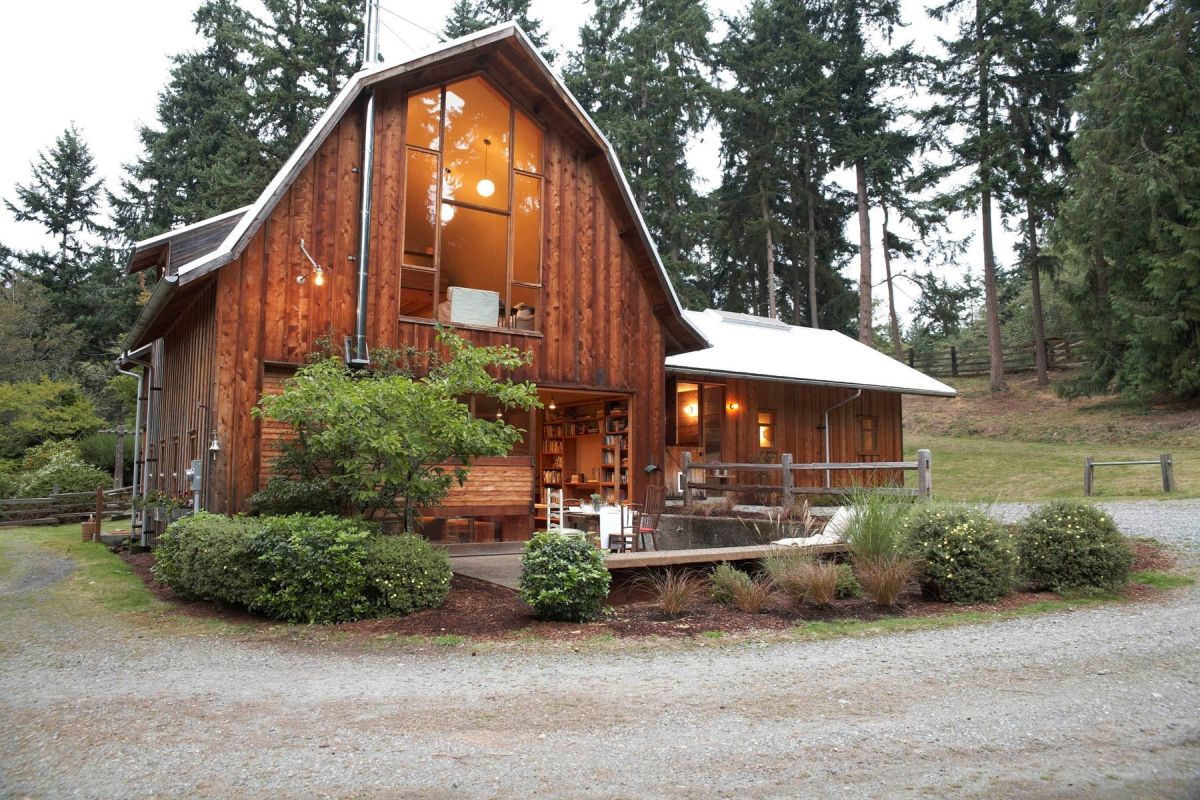


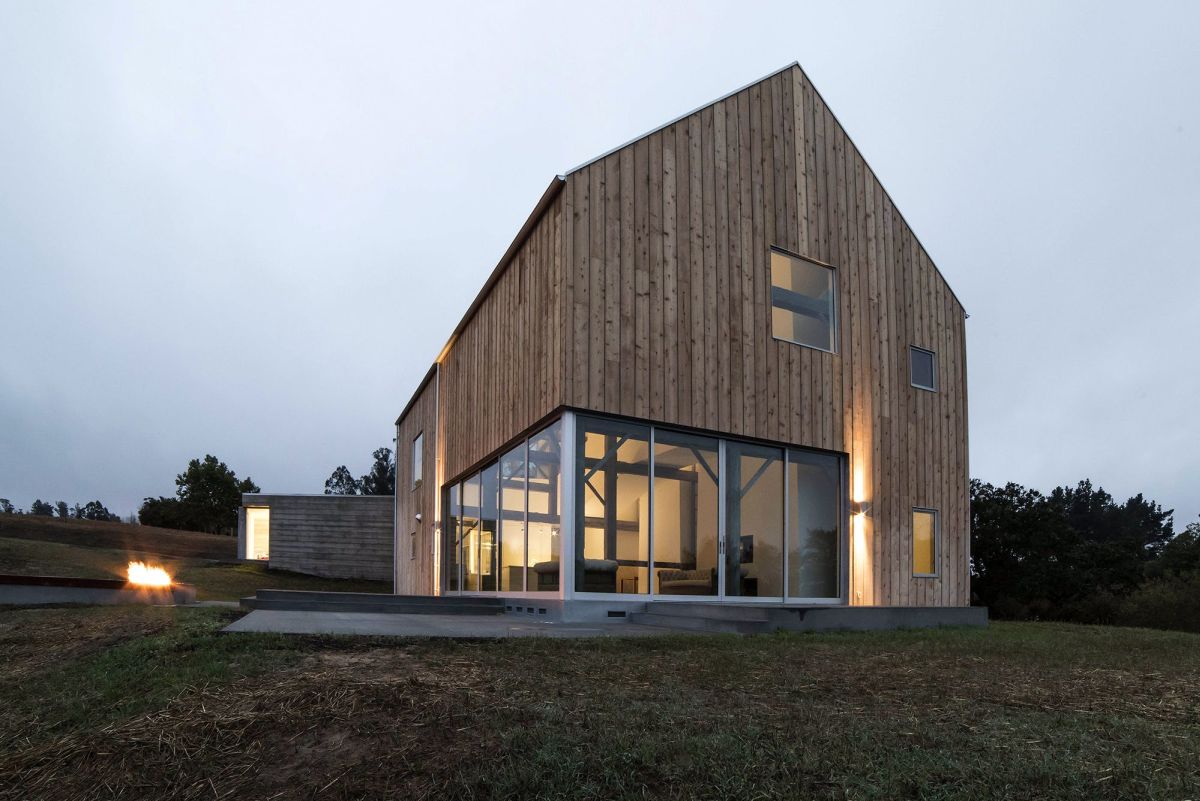


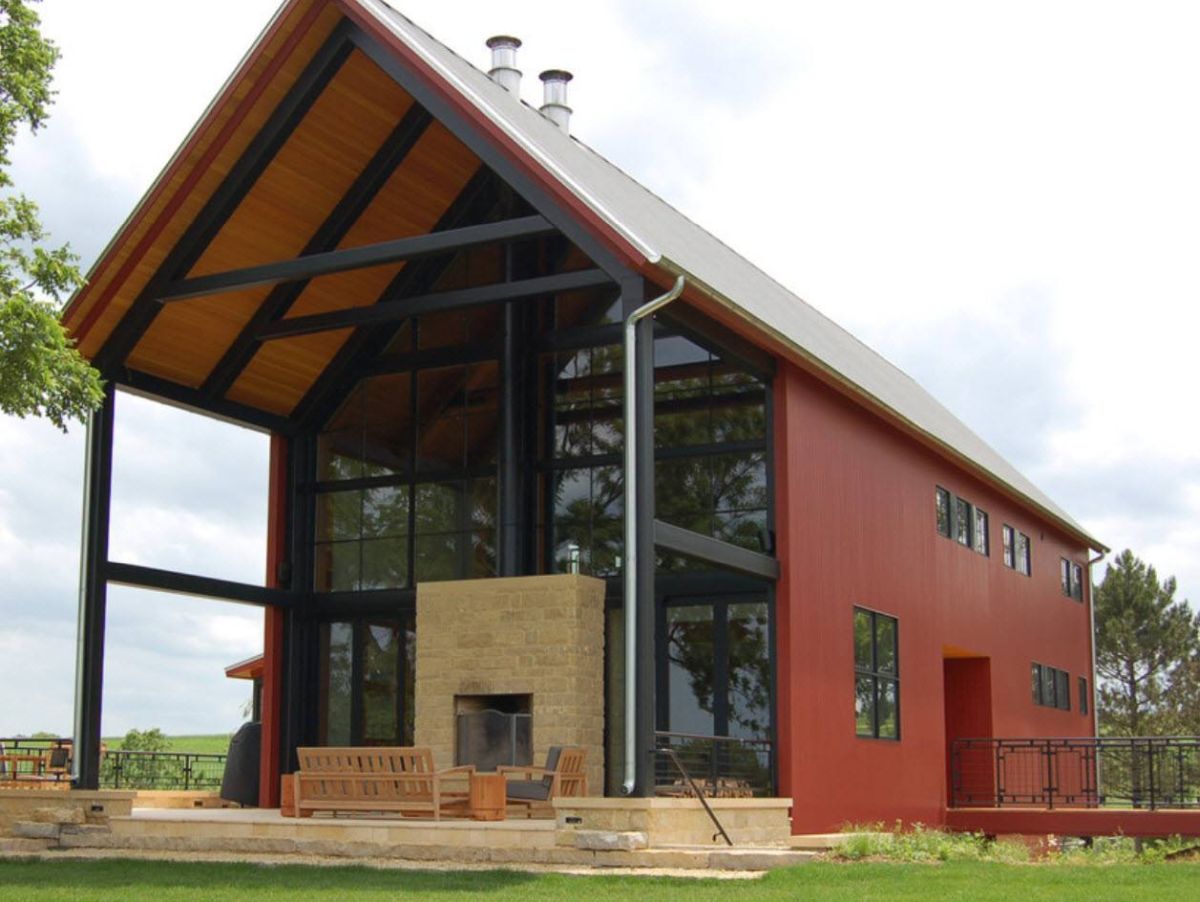

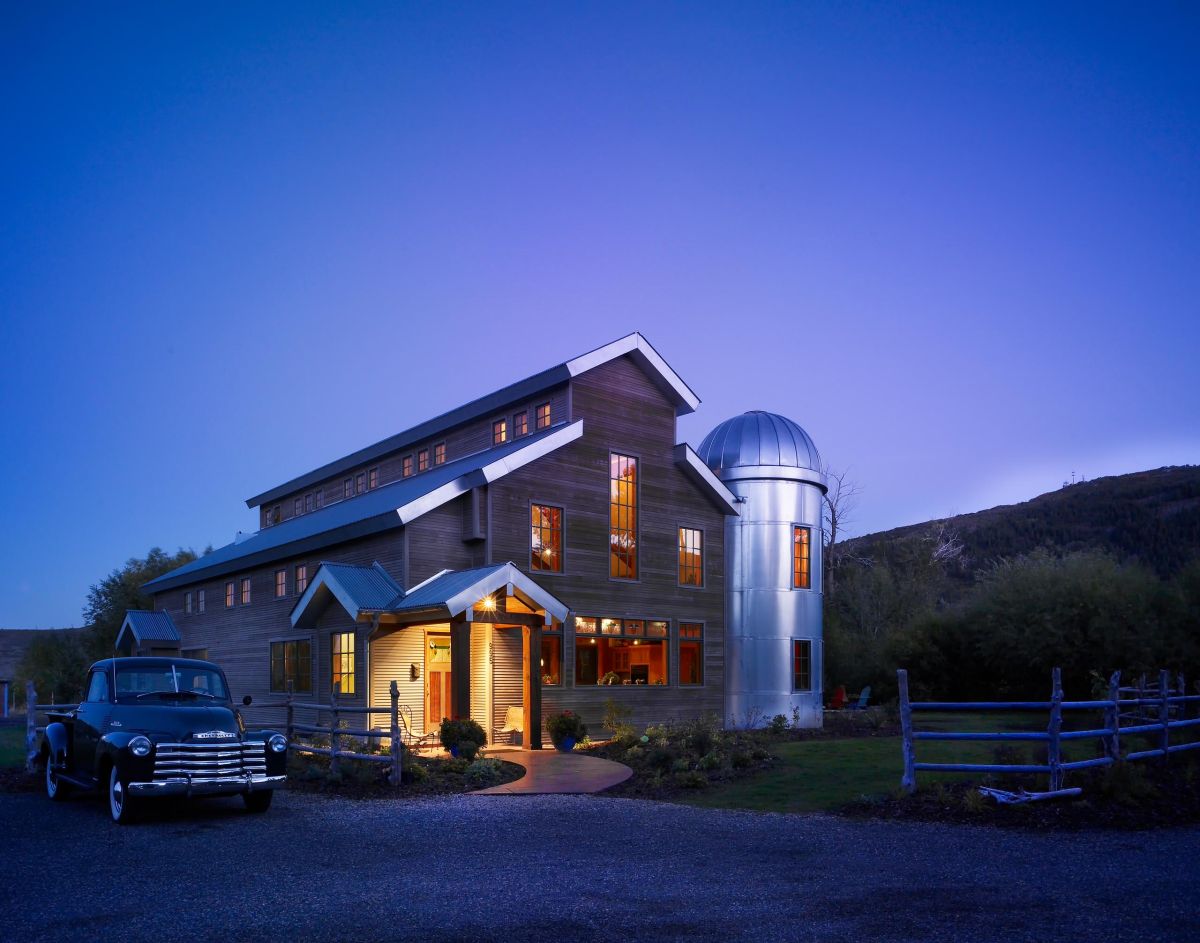









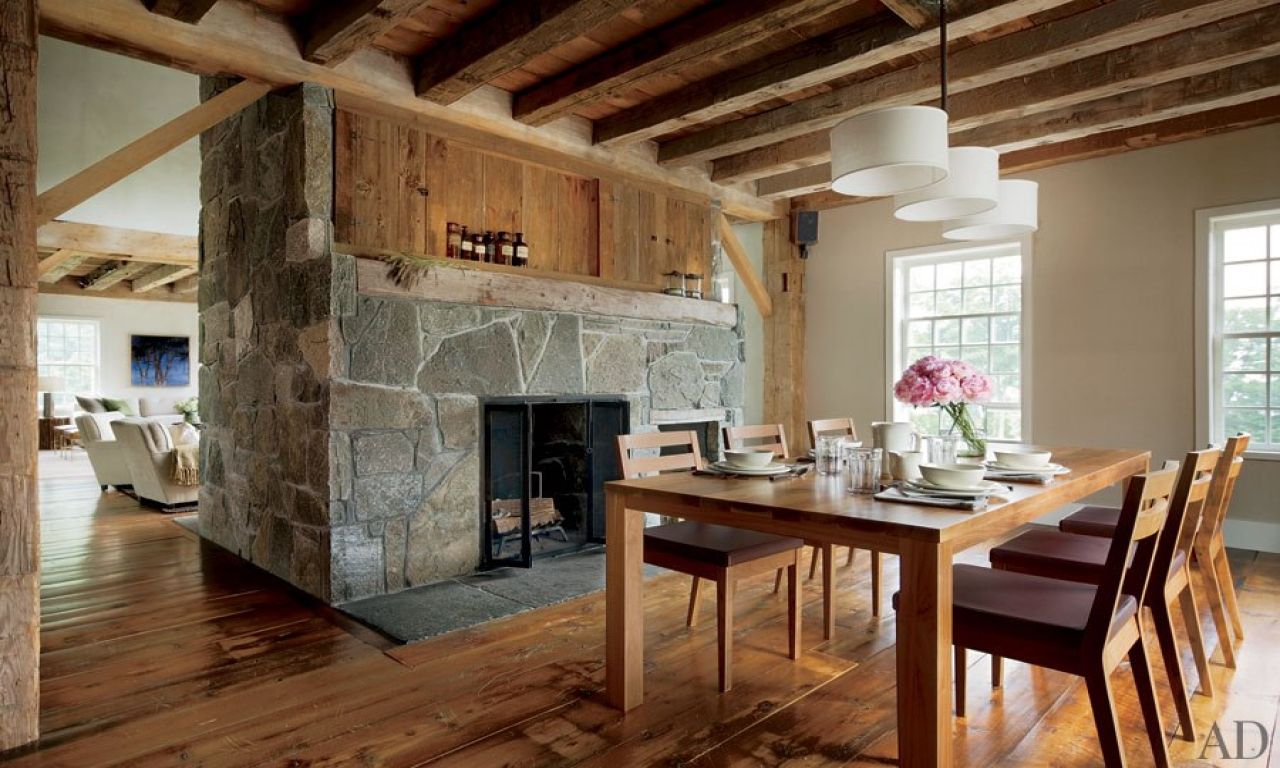





















0 Commentaires